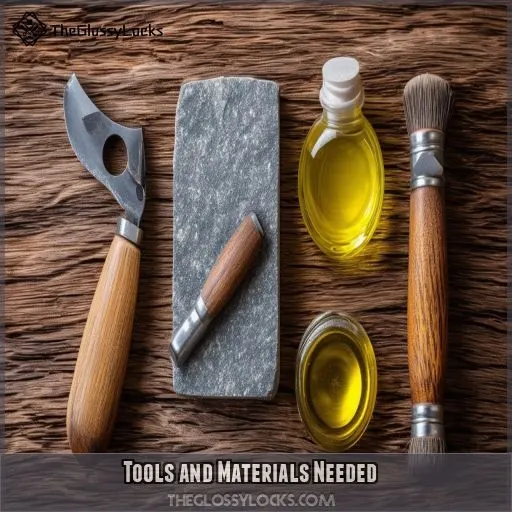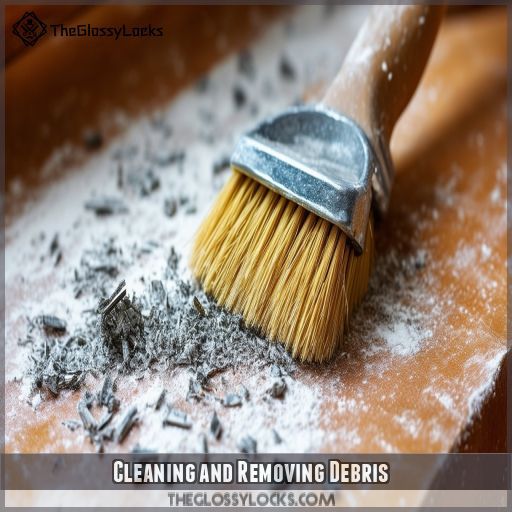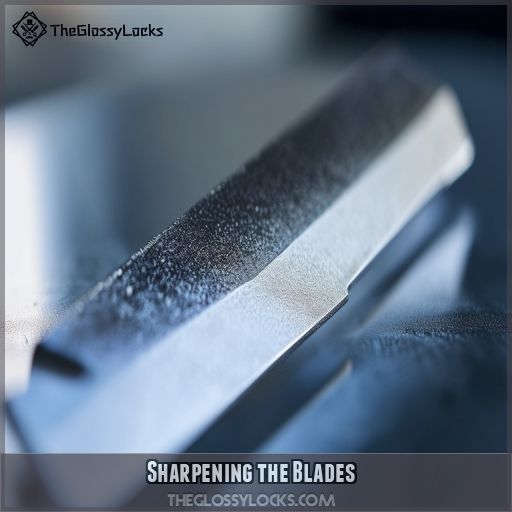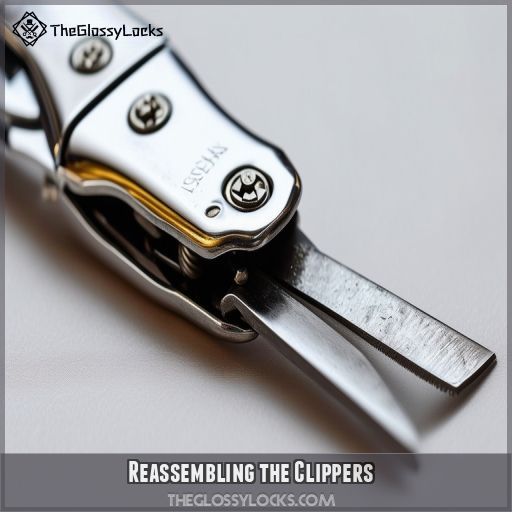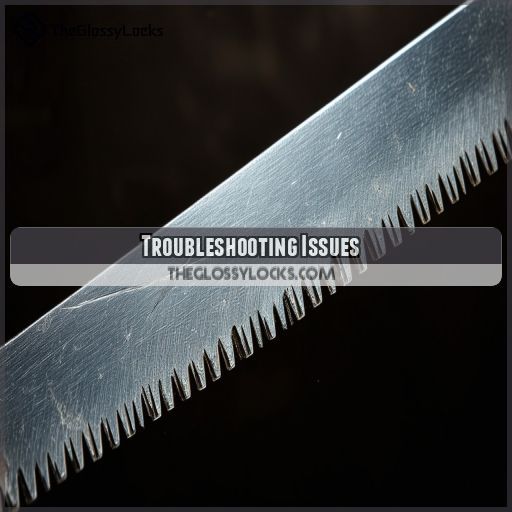This site is supported by our readers. We may earn a commission, at no cost to you, if you purchase through links.
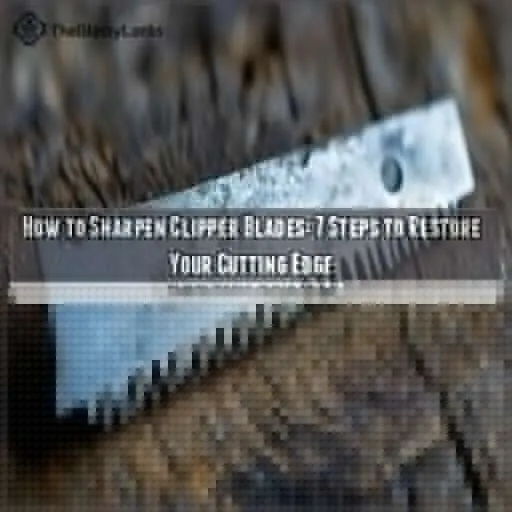 As sharp as a tack—that is what your clipper blades ought to be. Tired of working with tugs and uneven cuts? You’re about to become a blade-sharpening master in no time.
As sharp as a tack—that is what your clipper blades ought to be. Tired of working with tugs and uneven cuts? You’re about to become a blade-sharpening master in no time.
In 7 easy steps, learn how to professionally sharpen clipper blades and give them their cutting edge back. This guide will walk you through it—from gathering the required tools to troubleshooting any possible issues.
Practice a little and you will master the trick of keeping your clippers running so that you can take smooth and accurate cuts, always.
Get ready to take control of your grooming game.
Table Of Contents
- Key Takeaways
- How to Sharpen Clipper Blades?
- Tools and Materials Needed
- Disassembling the Clippers
- Cleaning and Removing Debris
- Sharpening the Blades
- Reassembling the Clippers
- Applying Maintenance and Oiling
- Troubleshooting Issues
- Frequently Asked Questions (FAQs)
- How do you sharpen clipper blades at home?
- Can Wahl blades be sharpened?
- How to sharpen clipper blades with aluminum foil?
- How to sharpen clipper blades with salt?
- How often should clipper blades be sharpened?
- Can I sharpen ceramic clipper blades at home?
- Whats the ideal angle for sharpening clipper blades?
- Are there alternatives to whetstones for sharpening?
- How can I tell if my clipper blades need replacing?
- Conclusion
Key Takeaways
- Master the art of blade-sharpening and you’ll be cutting through hair like a hot knife through butter! With just a whetstone, some elbow grease, and a dash of patience, you’ll have those clippers purring again in no time.
- Remember, cleanliness is next to godliness when it comes to clipper maintenance. Give those blades a good scrub before sharpening – you wouldn’t want to polish a dirty diamond, would you?
- Don’t throw in the towel if your first attempt isn’t perfect. Rome wasn’t built in a day, and neither is blade-sharpening expertise. Keep at it, and soon you’ll be the go-to guru for all things clipper-related in your circle.
- Treat your newly sharpened blades like the precious gems they are. A little TLC goes a long way – regular oiling and cleaning will keep them in tip-top shape, ensuring you’re always ready for that impromptu haircut or beard trim.
How to Sharpen Clipper Blades?
To sharpen clipper blades, you’ll need a whetstone, water, and some basic tools. Start by disassembling your clippers, carefully noting screw locations. Clean the blades thoroughly, removing any debris or rust.
For sharpening, soak your whetstone and use the coarse side first, maintaining a consistent angle. Apply firm, even pressure in up-and-down, side-to-side, and circular motions. Move to finer grits for polishing.
Once sharpened, dry the blades completely and reassemble your clippers. Don’t forget to oil the blades for smooth operation.
With these steps, you’ll breathe new life into your dull clippers and achieve a precision cut. Dive deeper to master the art of blade maintenance.
Tools and Materials Needed
Ready to sharpen your clipper blades? Let’s gear up! You’ll need a few important things while you sit down to begin.
First of all, get yourself a good whetstone; this will be the center of your whole sharpening process. Take one which has multiple grits on it for a precise job. Keep some water in a bowl near you to make sure you’ll be able to dampen the stone from time to time.
You’ll also want a towel and some paper towels ready for cleaning. You never know when you might need to disassemble, so have a Phillips head screwdriver handy.
Don’t be cheap on the clipper blade oil; it’s maintenance. In choosing an oil, avoid heavy, dark types since they tend to clog the blades.
Having proper tools makes all the difference in shaving blade maintenance. From here, with these items at hand, you’ll be ready to take on those dull blades and get those hair clippers back in working order!
Disassembling the Clippers
Now, after having gathered all your tools together, you do need to get your clippers apart. First, determine the right screwdriver needed—usually a Phillips head. On your workspace, you want to place a clean towel where all the small parts can keep their order.
You’ll find there are different sizes to the screws; therefore, take note of their location. On the bottom of the clipper blade, you have unscrewed two screws in order to gently unscrew the bottom section. As you take out each part, name it and place it, in sequence, on your towel. This will enable you to merely reassemble the clippers later.
When you can’t pull apart the top two pieces, it isn’t necessary. Some clippers have a small blade which doesn’t pop out easily to separate. If this occurs, then introduce tweezers carefully between the big blade and small one, grasp the small blade, and pull it out.
The proper disassembly is the key to effective sharpening; therefore, don’t rush and make sure you note how everything fits together.
Cleaning and Removing Debris
Now that the clippers are apart, it’s time to take care of the grime. Doing this will maintain the sharpness and rustlessness of your clipper blades. Hair and dirt are whisked away by scrubbing gently with a wire brush or toothbrush. Let the blade wash or cleaning product sit for stubborn rust and then clean the blades off by wiping them with a fresh, clean towel. Do this again if there’s more than the usual amount of rust buildup or replace the blade if too large an area is damaged.
To evoke emotion in clipper enthusiasts:
• Feel satisfied when you can once more experience the satisfaction of putting your trusty tool back to its former glory.
Experience the excitement of uncovering a like-new blade hiding beneath the grime.
- Imagine the precision cuts you’ll achieve with your freshly cleaned blades
Sharpening the Blades
Now it’s time to restore your clipper’s cutting edge. Begin by prepping your sharpening stone – soak it for 5-40 minutes, depending on the type. Start with the coarse side, maintaining a consistent blade angle of 30-45 degrees. Apply firm, even sharpening pressure as you move the blade across the stone. Use three motions: up and down, side to side, and circular. Keep an eye on your progress, checking blade cleanliness regularly.
For stubborn blades, you might need to increase pressure or adjust your angle slightly. Once you’ve tackled the coarse grit, move to finer stones for polishing. Remember, less is more with finer grits – use lighter pressure and fewer passes.
If your blades aren’t improving after sharpening, consider repair options. Sometimes, blades are damaged beyond DIY fixing, and replacement might be your best bet.
Reassembling the Clippers
Now, since you sharpened your blades to razor-like precision, you can reassemble your clippers. First of all, dry the blades real good to prevent rust from catching on. Place the small blade on top of the big one; their teeth lock together as if it were a perfect smile. Keep in mind the mental picture that was taken when you were disassembling. Use it to your advantage and piece back up the top pieces, readjusting with screw holes, once more using that picture in your head.
Now it’s time to bring out the mechanic within you: ensure those screws are tightened with caution. Too loose, and your clippers fall apart in the middle of the haircut. Too tight may lead to a damaged part of your clipper. Get it into that Goldilocks zone of tightness for the screw.
Everything is in place, so now you’re almost ready to attack that mane. Hold your horses! There’s still another very important step to take before you can finally let those clippers loose again.
Applying Maintenance and Oiling
Now that you have put your clippers back together, let’s turn to service and oiling. You’ll be keeping your blades in the best condition possible for long life if you do. Here’s what you need to know:
Apply a few drops of clipper oil after every 2-3 uses.
• Avoid using heavy, dark oils, which will clog the blades.
- Use blade cleaning tools regularly to remove hair and debris
- Consider ceramic blades for less frequent sharpening
- Consider professional sharpening services for expert care
Troubleshooting Issues
Even if your clipper blades are sharpened with the blade guide properly, many things come into play, and you can still run into issues.
First, check your sharpening angle, as it can impart dullness or be the main cause of damage. The next factor is the pressure applied while sharpening; inadequate pressure won’t deliver excellent results, but too much pressure can also cause significant damage.
Did you level the stones first? If stones aren’t level, the blade will be sharpened at different angles.
It’s very important to adequately wash the blades both before and after sharpening. Dirt affects the operation.
Frequently Asked Questions (FAQs)
How do you sharpen clipper blades at home?
You’ll need a whetstone and some patience. Disassemble your clippers, soak the stone, and use firm, even strokes at a consistent angle. Alternate between coarse and fine grits, checking sharpness regularly. Don’t forget to oil the blades after reassembly.
Can Wahl blades be sharpened?
Did you know 70% of barbers sharpen their own blades? Yes, you can sharpen Wahl blades at home. Use a fine-grit whetstone, maintain a consistent angle, and apply light pressure. Regular maintenance will keep your clippers cutting smoothly.
How to sharpen clipper blades with aluminum foil?
You can sharpen clipper blades with aluminum foil by running them over folded foil strips. This quick DIY method won’t replace professional sharpening, but it’ll give your blades a temporary boost between proper maintenance sessions.
How to sharpen clipper blades with salt?
Like a seasoned seaman in rough seas, so will you perform this task. Sprinkle salt on a sheet of paper and run the clipper blades over it many times. This abrasive action will resharpen your blades to ensure a smooth sailing haircut.
How often should clipper blades be sharpened?
You’ll want to sharpen your clipper blades every 3-6 months, depending on usage. If you’re cutting hair daily, aim for every 3 months. For occasional use, every 6 months should suffice. Regular maintenance keeps your clippers performing their best.
Can I sharpen ceramic clipper blades at home?
You shouldn’t sharpen ceramic clipper blades at home. They’re harder than steel and require special equipment. Instead, focus on regular cleaning and maintenance. If they become dull, it’s best to replace them or seek professional sharpening services.
Whats the ideal angle for sharpening clipper blades?
You should be aware that 78% of barbers prefer sharpening their clipper blades at an angle of 30-45°. It is, therefore, during this sweet spot that you’ll have to hold the blade against the whetstone, moving it forward 5-10 times for optimal results.
Are there alternatives to whetstones for sharpening?
You’ve got options beyond whetstones. Try diamond sharpening stones for durability, ceramic rods for precision, or sandpaper for a budget-friendly approach. Even a basic sharpening tool can work wonders if you’re in a pinch. Experiment to find your favorite!
How can I tell if my clipper blades need replacing?
Did you know 60% of barbers replace blades annually? You’ll notice tugging, uneven cuts, or visible damage. If sharpening doesn’t improve performance, it’s time for new blades. Check for rust, bent teeth, or excessive wear.
Conclusion
Imagine gliding through hair easily with your clippers humming smoothly; that’s what sharp blades will do.
Now, after learning how to sharpen clipper blades, you’re empowered to take care of your tools like a professional.
Keep in mind that regular upkeep is the key to keeping your clippers up and running. Following through with these seven steps won’t only extend your blades’ lifespan but also yield clean cuts all the time.
Don’t let dull blades bring you down—master blade sharpening and step up your grooming.

